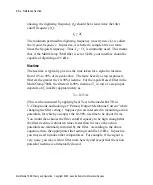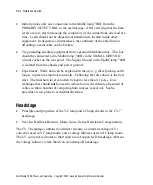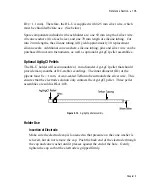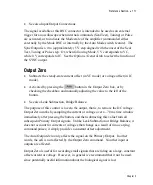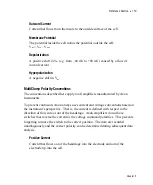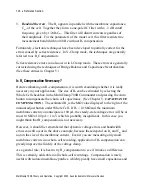
Reference Section
•
109
Headphone Jack: This will drive headphones or a remote powered speaker if
it is desired to monitor the audio output of the MultiClamp 700B. The
output is the same as that available at the rear panel AUDIO OUTPUT jack.
Rear Panel
HEADSTAGE #1 / #2: The CV-7 headstages are plugged into the corresponding
25-pin DB connectors. Note that Headstage #1 refers to Channel 1
inputs/outputs on the front panel, and Headstage #2 for Channel 2
inputs/outputs.
AUXILIARY HEADSTAGE #1 / #2: The optional voltage-following (HS-2) or
Bath (VG-2) is plugged into this 15-pin DB connector.
10 AUX1/ 10 AUX2: These BNC outputs provide x10 output signal for the
respective AUXILIARY HEADSTAGE channels.
USB: The USB port of the host computer is connected via of a USB cable.
AUDIO INPUT: This connector is used if you wish to mix the audio output of the
MultiClamp 700B with the audio output of your PC. Connect the audio output
of your PC’s sound card to the AUDIO INPUT socket and the MultiClamp
AUDIO OUTPUT socket to the PC-powered speakers.
AUDIO OUTPUT: This output can be used in conjunction with AUDIO INPUT,
as described above. It can also drive headphones or a remote powered
speaker, like the front panel Headphones Socket.
SYNC OUTPUT: The signal available at this BNC connector is intended to be
used as an external trigger for an oscilloscope when internal commands (Seal
Test), Tuning) or Pulse are activated, or to indicate the Mode state of the
amplifier (commanded either externally by the Mode BNC or internally by the
Auto Mode switch feature). The Sync Output is a 0 to (approximately) 5 V
step aligned with the onset of the Seal Test, Tuning or Pulse step. Or, when
following Mode, 5 V corresponds to VC, while 0 V corresponds to IC. See the
Options / General tab to select the function of the SYNC output.
Chapter 5


